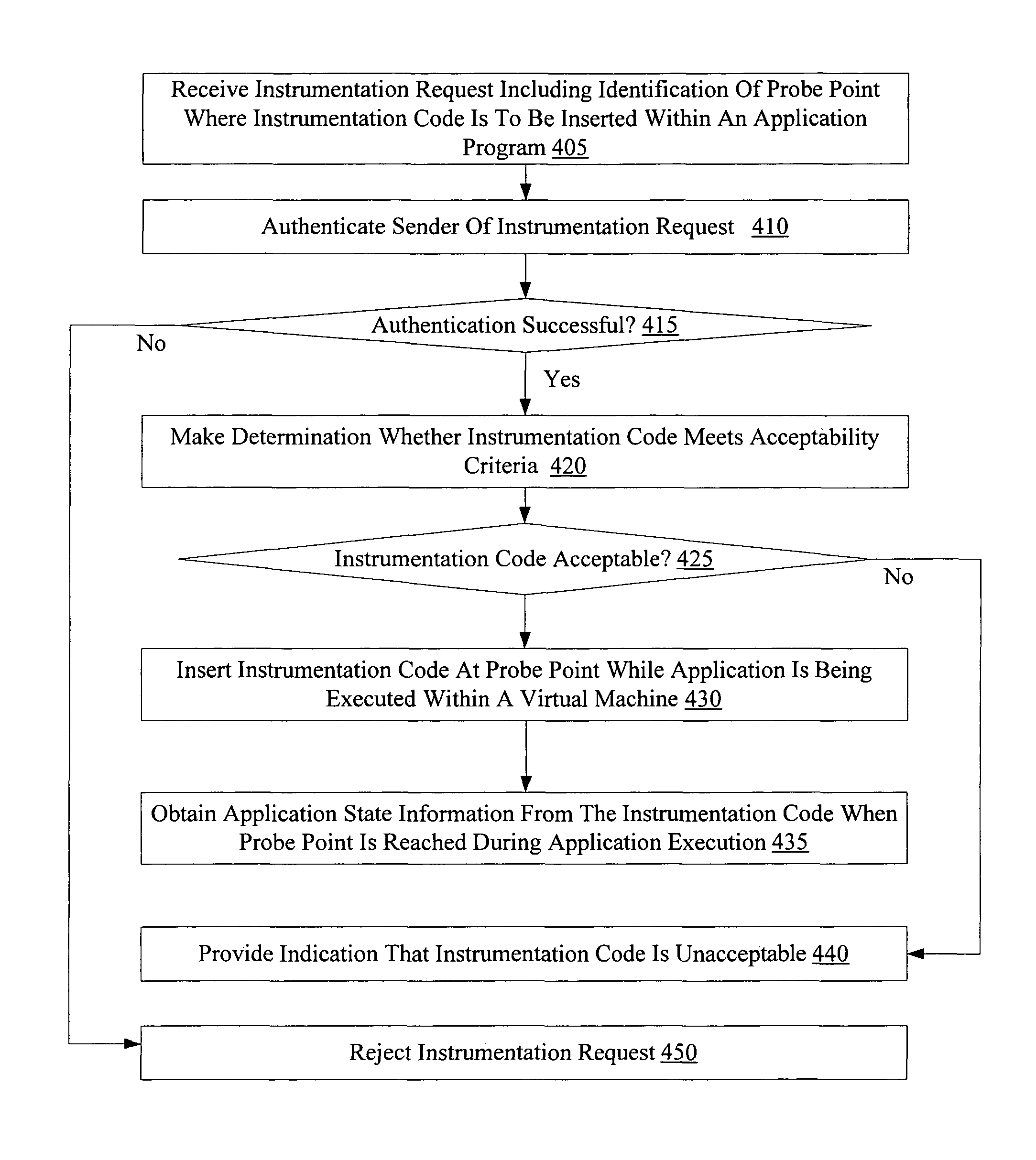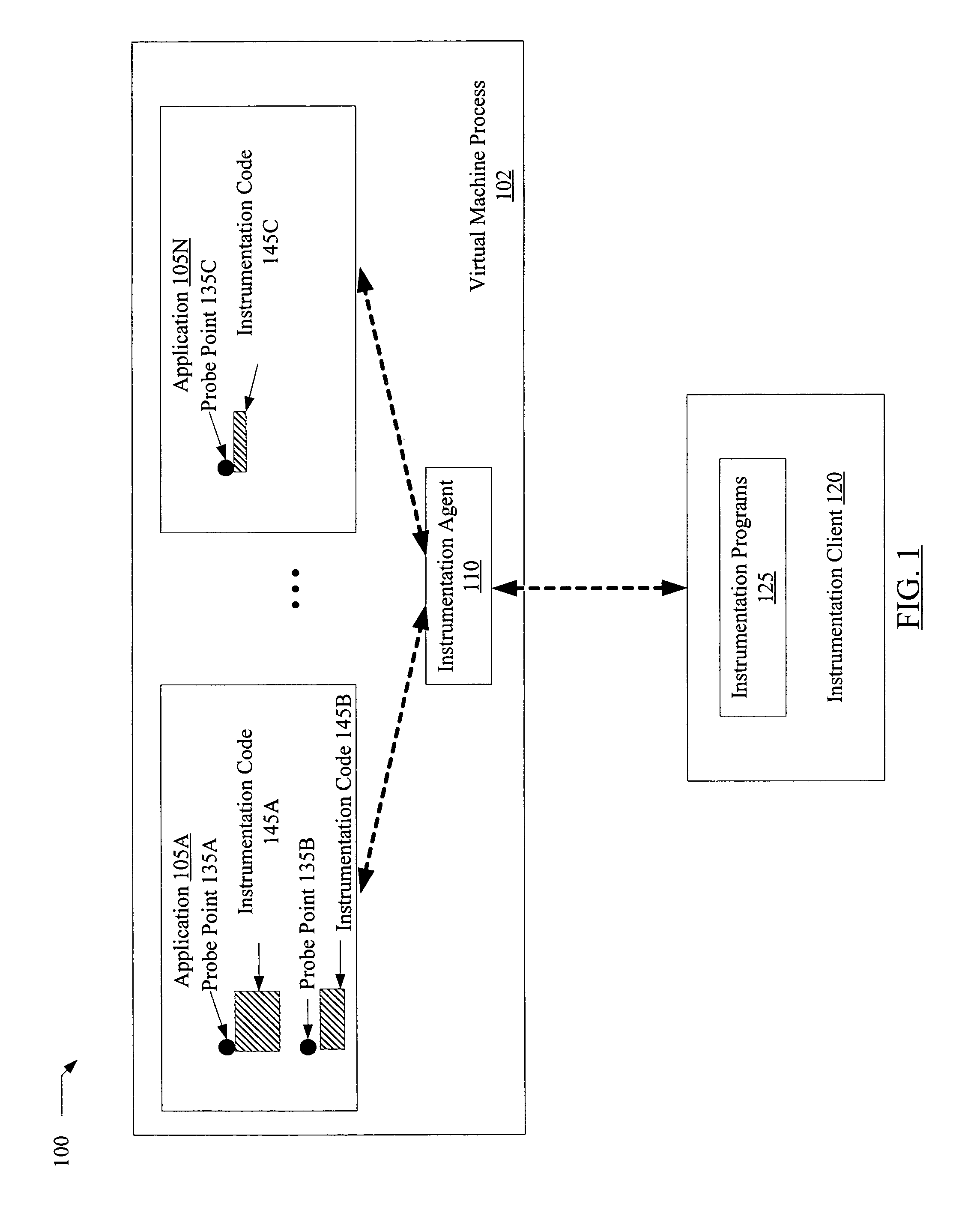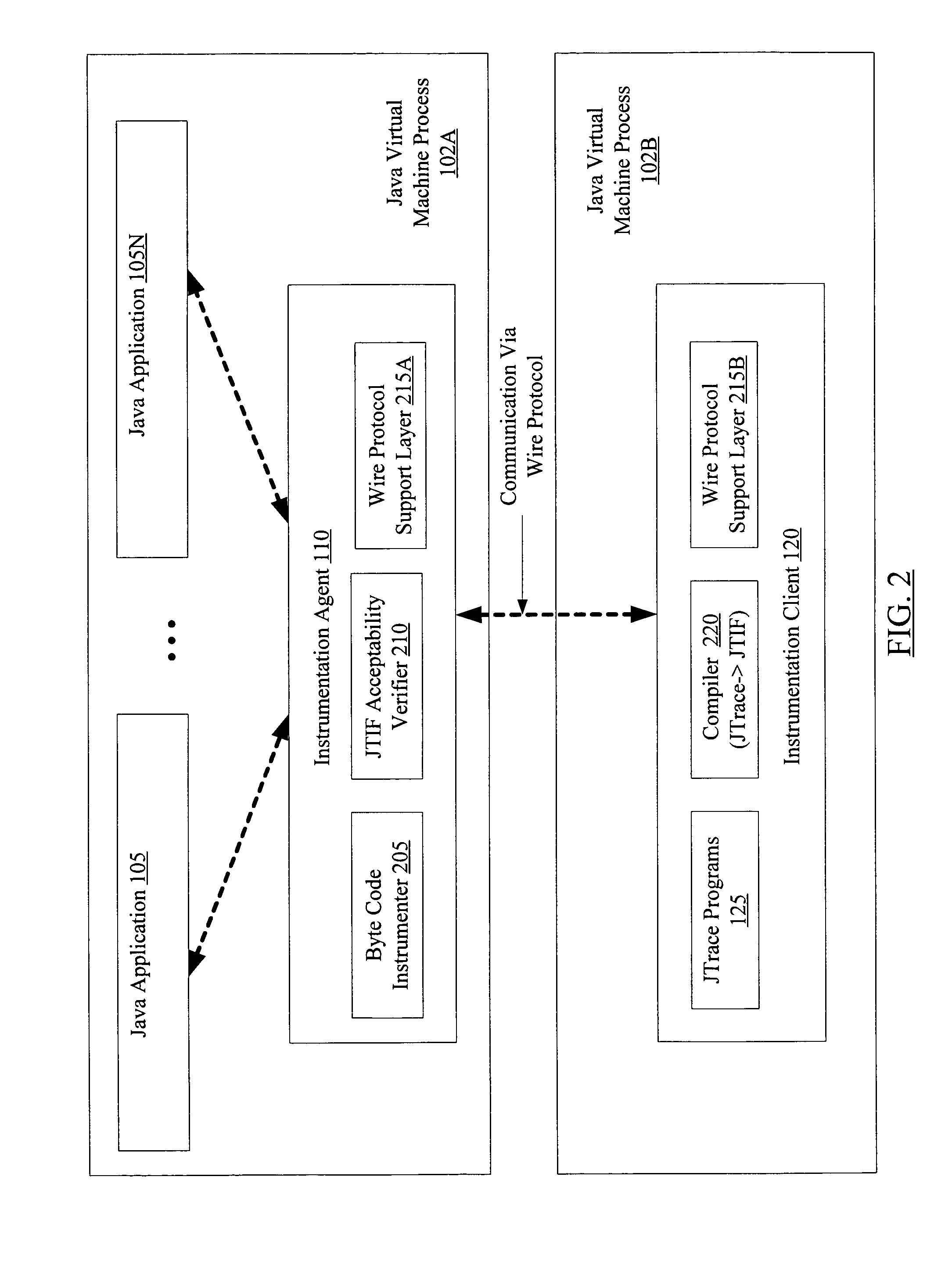Dynamic application tracing in virtual machine environments
a virtual machine environment and application tracing technology, applied in the field of computer systems, can solve the problems of not reaching the desired level of maturity and sophistication of serviceability and observability mechanisms of such applications, and the complexity and cost of developing, testing and deploying enterprise-level computer systems applications, and achieve the effect of facilitating the generation of instrumentation scripts
- Summary
- Abstract
- Description
- Claims
- Application Information
AI Technical Summary
Benefits of technology
Problems solved by technology
Method used
Image
Examples
example 1
[0035]
java.lang: ClassLoader: loadClass: entry {jstack( );}
[0036]The probe ID 305 in Example 1 consists of four colon-separated fields: provider field java.lang, class field ClassLoader, method field loadClass, and Location_In_Method field entry. The probe clause of Example 1 indicates that upon entry to a loadClass method of a ClassLoader class associated with provider java.lang, a built-in JTrace function called jstack( ) (the action block 310) is to be executed. The jstack( ) function may provide a listing of a Java-level stack trace of the traced JVM 102A whenever a new Java class is loaded by the ClassLoader in JVM 102A. The probe clause of Example 1 may be used to identify calling sequences—e.g., if a particular class C1 is suspected to be the cause of some unexpected behavior or performance slowdown, a user may use the probe clause of Example 1 to identify which other methods / classes of an application 105 led to class C1 being loaded. In addition to or instead of jstack( ), a...
example 2
[0037]
java.lang: ? extends java.io.InputStream : read: entry {print(“input stream read”);}
[0038]The probe ID 305 in Example 2 also consists of four colon-separated fields: provider field java.lang, class field “? extends java.io.InputStream”, method field read, and “LocationInMethod” field entry. In Example 2, the wild card character (“?”) within the class field serves as an indicator that instrumentation code corresponding to the action block 310 (print(“input stream read”)) is to be inserted into any of a plurality of classes that may extend the class java.io.InputStream. As a result on instrumentation performed according to Example 2, trace message “input stream read” may be printed out whenever a read method of any such class is entered. Similar wild cards may also be used in one or more other fields of probe IDs 305 (e.g., in method fields and / or in Location_In_Method fields) in some embodiments. As shown in Example 2, JTrace may allow groups or categories of classes and / or met...
example 3
[0039]
java.profile: 5000 {print(com.acme.cacheManager.cacheCount);}
[0040]The probe ID 305 of Example 3 consists of just two fields: the name of the provider (java.profile) and a profiling frequency (5000) expressed in a default time unit such as milliseconds. The java.profile probe provider may be used to perform statistical profiling using timer-based sampling techniques, e.g., to identify trends such as the methods of an application 105 in which the most processing time is being spent, the number of threads typically waiting for a lock, etc. The probe clause of Example 3 indicates that the value of a static field (com.acme.cacheManager.cacheCount) of an application-defined class (com.acme.cacheManager) is to be printed out once every 5000 time units, thus allowing a user to determine how the value of that static field varies over time. In some embodiments, the probe ID 305 for a profiling probe provider may include additional fields, such as a specification of a non-default time u...
PUM
 Login to View More
Login to View More Abstract
Description
Claims
Application Information
 Login to View More
Login to View More - R&D
- Intellectual Property
- Life Sciences
- Materials
- Tech Scout
- Unparalleled Data Quality
- Higher Quality Content
- 60% Fewer Hallucinations
Browse by: Latest US Patents, China's latest patents, Technical Efficacy Thesaurus, Application Domain, Technology Topic, Popular Technical Reports.
© 2025 PatSnap. All rights reserved.Legal|Privacy policy|Modern Slavery Act Transparency Statement|Sitemap|About US| Contact US: help@patsnap.com



